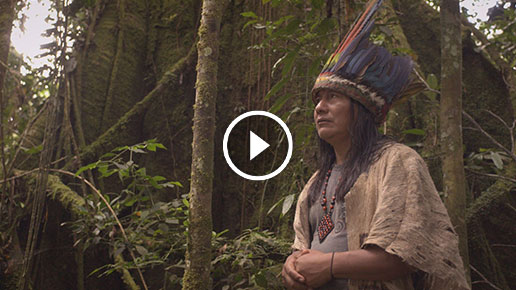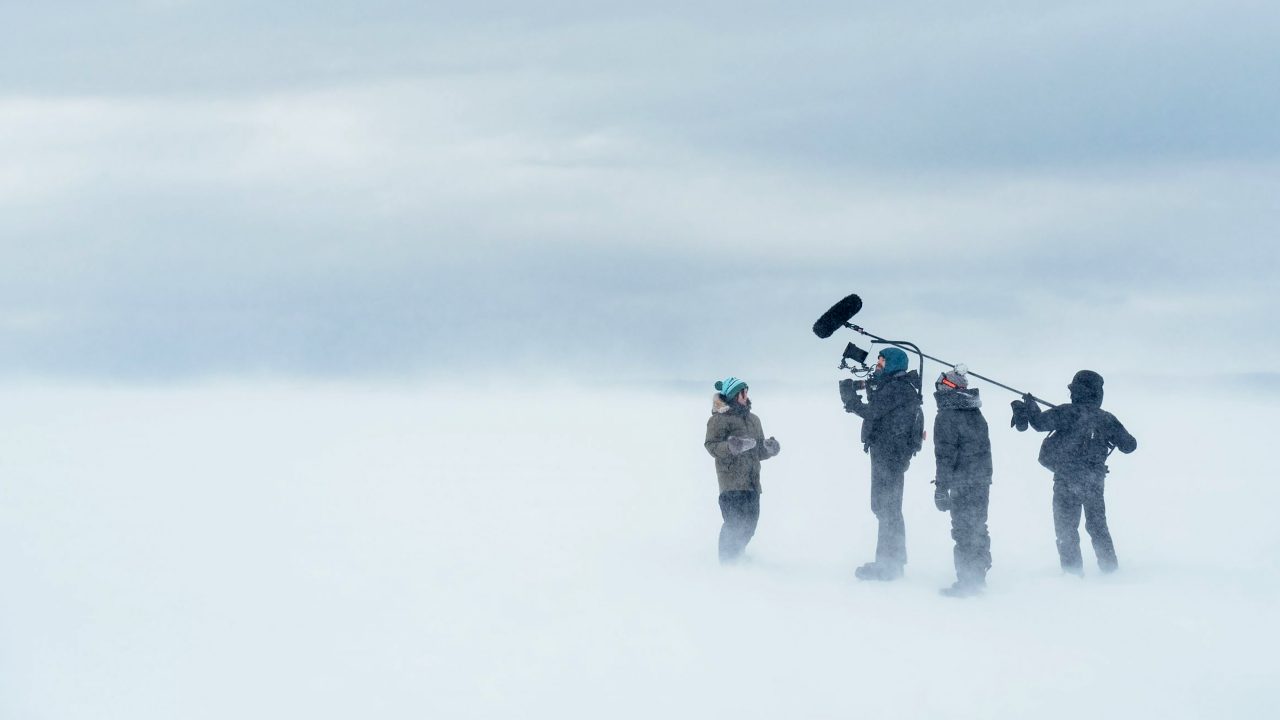
Mini-Lesson for The Magnitude of All Things
Mini-Lesson for The Magnitude of All Things
Mini-Lesson for The Magnitude of All Things
School Subjects:
- Diversity/Pluralism – Diversity in Communities and Identity
- Geography/Environmental – Issues
- Human Geography – Environmental Issues, Territory: Indigenous
- Social Studies – Environmental Challenges
Recommended Ages: 15-17
The Magnitude of All Things, Jennifer Abbott, provided by the National Film Board of Canada
Keywords/Topics: Coping with Illness and Dying, Grieving, Land-Based Learning, Indigenous Worldview, Concerns and Rights, Environmental Perspectives, Climate and Weather, Social Action, Climate Change, Ecocide, Cancer
Warnings: Incidental swearing (F-word) and disturbing image of dead beached seal
Overarching Question: How can worldviews contribute to actions toward environmental stewardship, coping with ecological grief, and wellness?
Educational Synopsis: The Magnitude of All Things beautifully connects grieving of life and land loss. Narratives of individuals and groups who are deeply connected to the environment and are directly affected by changes to it are interwoven with the filmmaker’s childhood memories of time spent with family on the land. Climate-change causes and effects, combined with lamentations of loss, can motivate individuals, groups and communities to advocate for the environment in the hopes of inspiring worldviews and actions that value our relationship with the land. The filmmaker also addresses concepts of hope in relation to mourning and the future. Pre-knowledge building lessons in relation to causes and effects of climate change would enhance the overall learning outcomes that can be associated with this film.
Pre-Screening Reflection – Have students write one or two sentences that reflect their worldview in relation to how they connect with the land.
Activity 1: Eco-Poetry
Step 1 – Before watching the clip, ask students to pay attention to the symbolism and juxtaposition of imagery. Have students consider the emotionally charged and poetic feel of the narration and lamentations.
Step 2 – As a class, in small groups or pairs, discuss and share thoughts on the symbolism and juxtaposition of imagery as well as the emotionally charged and poetic feel of the narration and lamentations within the clip.
Step 3 – Review elements of a haiku as well as the qualities of a metaphor and simile.
Step 4 – Choose one or both options for students to work on independently.
Option 1 – Create metaphors or similes that connect grieving of loss of land (climate-change effects) with loss of a loved one.
Option 2 – Create a series of haikus that include connecting grieving of loss of land (climate-change effects) with loss of a loved one.
Summary
The clip selected beautifully juxtaposes poetic and emotionally charged narratives and imagery that relate grief on a personal and ecological level. The beginning of the clip connects the viewer with the meditative sound and imagery of water melting and dripping, which is often associated with spring and the renewal of life. Water transitions to thoughts of snow, which in actuality is ash from a fire, thus juxtaposing fire and water elements. The dripping water from melting ice transitions to that of an IV drip, while the narrator, in poetic language, describes feelings of grief that are naturally associated with the death of a loved one. The drips of water may be symbolic of the tears one sheds when mourning the loss of a loved one, while also signifying the need for water for survival. Stories are shared by people who have a deep-rooted relationship with the land that is embedded in their ancestral worldview and way of life. The clip ends with the narrator’s poetic voice layered over images of positive memories of interactions with the land and with family. It invokes memories of a time when one didn’t have to consider saying goodbye. Visual and spoken poetry lifts this film to allow viewers to engage in emotions that may inspire positive action when it comes to climate-change education and initiatives.
Activity 2: Juxtapose Eco-Poetry
In the first activity, students created poetry that reflects grief and personal loss in connection with land loss (climate change), while this activity generates new poems that are inspired by considerations of a worldview that values a holistic relationship with the land, juxtaposed with actions that could motivate hope and opportunity.
Step 1 – The middle of this clip reinforces a worldview in which humans and nature are connected not only physically, but spiritually as well. At the end of this clip, the narrator suggests that there needs to be an “ethical shift.” As a class, discuss what is meant by an “ethical shift.”
Step 2 – Brainstorm ways to encourage an ethical shift in thinking and doing that encourages a hopeful future with regards to our relationship with the land. Students can consider what actions they can take big or small, as well as consider what new opportunities may arise from a changed climate future (e.g., new career opportunities).
Step 3 – Choose one or both options for students to work on independently.
Option 1 – Create metaphors or similes that connect the worldview of “land as connected to us” and words that encourage hope, actions, or opportunities that will help to combat climate change.
Option 2 – Create a haiku that includes connecting the worldview of “land as connected to us” and words that encourage hope and actions that will help to combat climate change.
Step 4 (optional) – Students share as a group, small group, or in partners the eco-poems from Activities 1 and 2, thus juxtaposing grief with hope.
Summary
This clip begins to ask the question, What do we do when we acknowledge the reality of the impacts of climate change? The clip reveals worldviews about how humans relate to the land. In this clip and throughout the film, many Indigenous representatives reflect on their connection to the land. Manari Ushigua and Mukutsawa Ushingua suggest that the destruction of the earth is the destruction of us, and that the land is like their temple. Earlier in the film (13:30), the statement “if this land hurts we hurt” correlates with the belief that climate change affects overall health and wellness. The clip acknowledges that we must find ways to move beyond the paralyzing effects of grieving land loss and despairing about climate change so that we can embrace actions, opportunities, renewed relationships and worldviews of how we relate to the land.
Activity 3: Reflect and Share
Step 1 – Watch the video clip and ask students to pay attention to the contrasting imagery between cityscape and forest land while listening to the various narratives.
Step 2 – Within this clip there are a series of quotes, listed below. Students can choose one, or the teacher can randomly assign students to one of the quotes, ensuring each quote is being reflected on by someone.
Step 3 – Have students pause, reflect, write down and share with a partner their thoughts on what the statement means to them on a personal and global level.
- “How do we make right what we have done as a species?”
- “We are powerful, but we are not as powerful as a wilful planet.”
- “Nature and humans are not in balance.”
- “Climate change is disrupting who we thought we were and where we were going.”
- “Our message to developed countries is that they should stop dreaming up in the air.”
- “Your actions are diminishing the human presence on this earth.”
- “We need to tell the truth. We cannot hide things just because it’s not hopeful.”
Step 4 – Display the paraphrase “Hope is a belief in a beautiful future. That kind of hope is not my friend.”
Step 5 – Invite students to share thoughts on what kind of hope the narrator IS a friend of in terms of what the future can look like and what actions they can partake in to contribute to climate-change action.
Each student can complete the sentence “Hope is _____________” on a large piece of paper with the context of climate-change action in mind. Display the papers on the walls around the classrooms.
Step 6 – Have students reflect on whether their worldview in relation to our connection to the land has changed, stayed the same or is enhanced after watching this film.
Summary
With this activity, students considered their worldview and how it may shift or become more empathetic to the worldview of the representatives in this film. There are many emotionally charged statements in this clip that emphasize the inseparable connection to the land that those who are advocates for environmental stewardship have. The overall push within developed countries may encourage a severing of ties to an emotional attachment to the land and love of land stewardship. The addiction to material wealth in the name of progress that developed places may promote continues to squash the inherent rights and beliefs of Indigenous nations and others who connect or reconnect with the belief that living in balance with and respecting nature will ensure the well-being and health of human existence far into the future.
Take Action: Climate Change AWARENESS and ACTION Campaign
Develop a positive, solutions-focused climate awareness and action campaign.
Step 1 – Display the quote from the film “The action of trying to repair land helps people try to repair themselves” (59:00). Students are given two minutes to reflect on this statement.
Step 2 – In large or small groups, brainstorm actions and opportunities that can be initiated to help repair the land. Record ideas on a large piece of paper.
Step 3 – For homework, students search for a green space or thing in/of nature that they connect with. They need to take a photo or make a sketch of that thing or place.
Step 4 – Students select text to interlay overtop the image. Text that they can choose from includes poems from Activity 1 and 2, hope sentences from Activity 3, or actions/opportunities they brainstormed as a class. Students can create more than one poster if they have the time.
Step 5 – Share the posters on social media and around the school and community.
Crystal is a Cree/Dene Métis mother, Educator, Indigenous Education Consultant, and artist who is dedicated to supporting the Calls to Action. She has a background in New Media studies at the Vancouver Film School, a Bachelor of Education, a fine arts degree and a master’s degree in Educational Technology, as well as an Indigenous Creative Writing and Visual Arts diploma from the En’okin Center. She also has extensive experience teaching in First Nations communities, and experience in resource development, research and the facilitation of Indigenous Education for teachers across the province of Alberta, as well as in teaching educational technology to pre-service teachers.
Pour lire cet article en français, cliquez ici.
Discover more Mini-Lessons | Watch educational films on NFB Education | Watch educational playlists on NFB Education | Follow NFB Education on Facebook | Follow NFB Education on Pinterest | Subscribe to the NFB Education Newsletter






